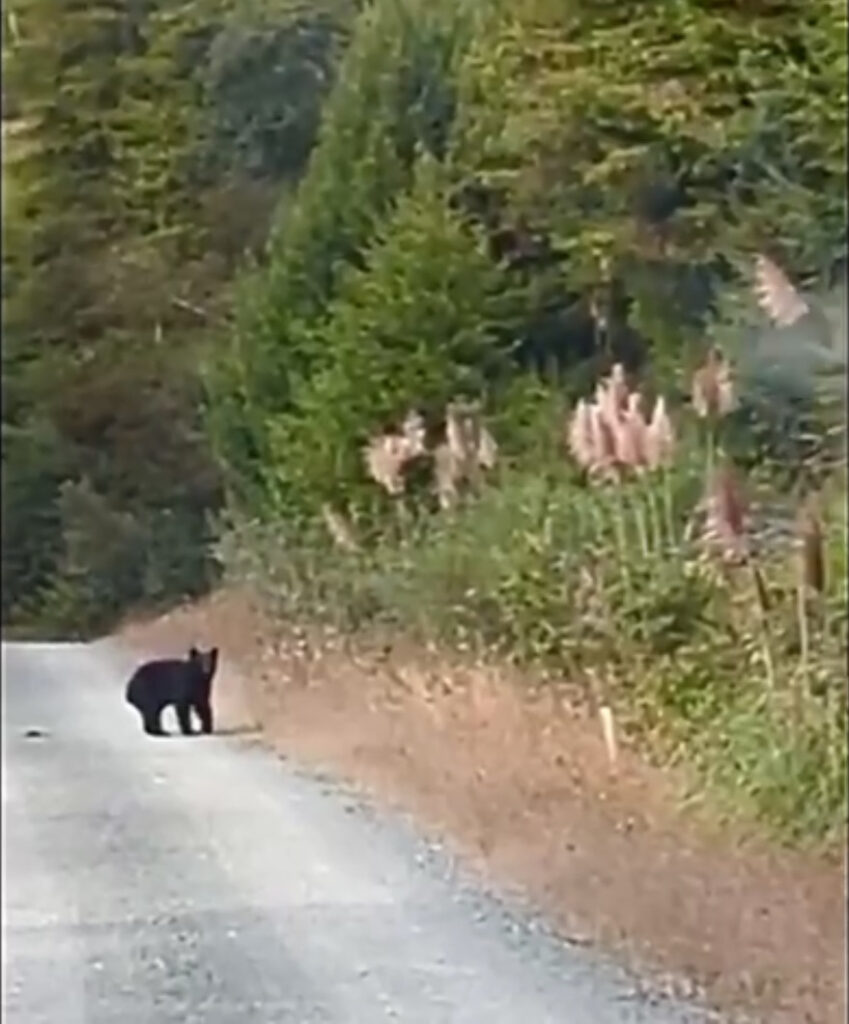News
The Truth About Black Bears
April 24, 2024

Bear with us for a moment. It’s time to put away your picnic basket and talk about the American black bear (Ursus americanus).
North America’s smallest bear, the American black bear is also California’s only living bear species. They inhabit forested areas all over the North Coast, moseying through the forest foraging a diet of mainly plants (and only sometimes honey). Roots, berries, and the occasional fish make up the bulk of their diet.
Black bears can come in a variety of different coats, from black to brown to nearly blonde. How can you tell if you’ve rediscovered the fabled California grizzly or have just seen a big brown black bear? The easiest ways to tell them apart include a much smaller shoulder hump in black bears and a rounder face, as grizzlies often have sharper angles from skull to snout.
Ursus americanus doesn’t always hibernate, depending on how much food is available, but when they do it can be for up to six months! During this time they do not eat, drink, or go to the bathroom, and they can lose up to one-third of their body weight. The bear’s life cycle is based around this time period, as mating occurs in the summer but embryo development is paused until the expectant mothers are tucked away in their winter dens. Once born, the cubs will nurse and stick with mom for up to 18 months learning the “bear necessities” of life before venturing out on their own.
According to the Be Bear Aware Campaign, black bears number about 600,000 in North America, and they are amazingly dexterous and intelligent. This can lead to conflicts with humans. Bears have been known to open car doors and unscrew the lids off jars, leaving a trail of destroyed upholstery and sticky messes along the way.
But don’t be afraid to venture into the woods just because bears are out there. When walking through the forest a simple shout of “hey bear!” is usually enough to send one running from you before you even see it. See this clip. According to the North American Bear Center, in the last 124 years, there have been 61 bear-related human fatalities in North America, far fewer than the average of 27 annual lightning-strike deaths in the U.S. cited by the Encyclopedia Britannica!
The U.S. National Park Service offers this advice if you come across a bear:
Consider yourself lucky, but remember these simple rules:
- Stay together, especially with small children.
- If a bear changes its behavior because of your presence, you are too close.
- Don’t get between a female and her cubs.
- Don’t linger too long.
So, you should be alert when in bear country. Non-fatal “interactions” do happen. The California Department of Fish and Game has a listing of 99 bear incidents from 1986-2015. The incidents range from zero in 1987, 1988, 1999, to a high of six in 2015. None of the 99 reported encounters were fatal. But having a bear center-punch your car’s rear window can ruin an outing!
The best way to guard against an unplanned and unpleasant bear interaction is to lock up any food in bear canisters and never keep food, trash, or even toiletries in your tent when you’re in bear country. Here’s a list of problematic items from the Park Service.
- garbage and recyclables
- soap, shampoo, toothpaste, sunscreen, first-aid kits, baby wipes, lotion, hairspray
- scented tissue, air fresheners, candles, insect repellent, cleaning products
- pet food, tobacco products, baby car-seats
- any food item, including dry goods
- any beverages, whether they are opened or closed
And for the record, Yogi-the-Bear and Boo Boo were … gasp … BRUINS! (AKA Grizzlies). But no need to worry. That pair never ventured outside of Jellystone Park. So, while hiking in Mendocino County, your lunch-time treats are safe….
Mostly (see above).